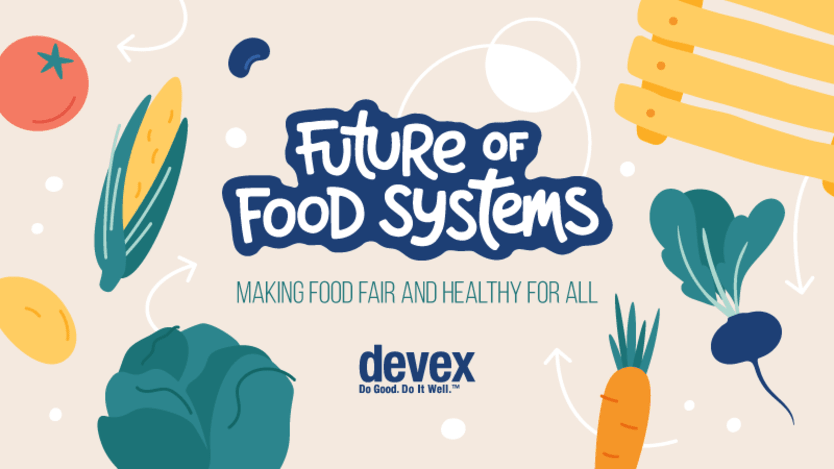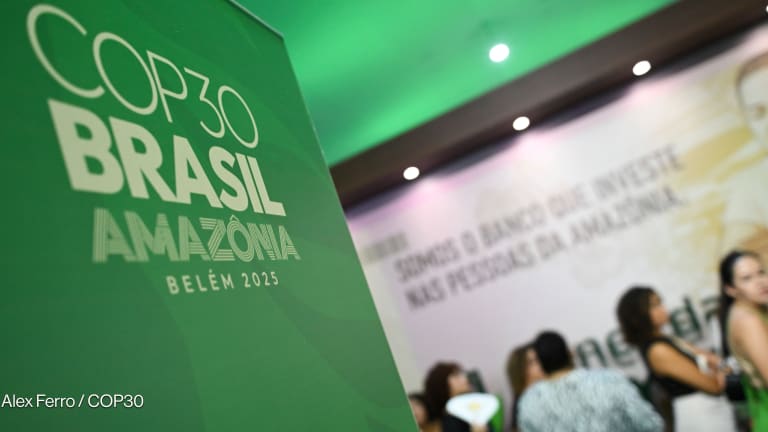
Every country measured in the United Nations Environment Programme’s “Food Waste Index Report 2021” was found to waste significant amounts of food, contrary to the widespread belief that only wealthy countries have such a problem.
Household-level food waste in lower-middle-income countries was 91 kilograms (201 pounds) per capita per year, while it was 76 kilograms in upper-middle-income countries, and 79 kilograms in high-income countries. There was not sufficient data to measure food waste in low-income countries, according to the index, which was produced by UNEP in partnership with the Waste and Resources Action Programme, or WRAP.
“This diverges really from what we thought was previously a richer-country problem, where we thought that in developing countries it was mostly about food loss related to production, storage, and transportation losses. These numbers are even more shocking as 690 million people were affected by hunger in 2019 and 3 billion are unable to afford a healthy diet. COVID-19 does put increasing pressure on these vulnerable populations as well,” said Martina Otto, head of the cities unit at UNEP.
“Food waste is a challenge of epic proportions, and it needs to be addressed with a real sense of urgency. Food waste has substantial environmental, social, and economic impacts. Throwing away food de facto means throwing away the resources that went into its production — both natural and financial resources.”
The index also examined average food waste at the food service and retail levels in high-income countries, but there was insufficient data to do so with countries at other income levels. While previous estimates of global food waste “significantly underestimated” the scale at which the world was throwing away food, the index found that approximately 931 million tonnes of food waste was generated in 2019, with 61% coming from households, 26% from food service, and 13% from retail.
This means that as much as 17% of total global food production is never consumed.
“Food waste is a challenge of epic proportions, and it needs to be addressed with a real sense of urgency.”
— Martina Otto, cities unit head, UNEPOtto said countries should integrate the reduction of food waste into their national climate strategies — a reflection of the massive environmental impact it has. About 8% to 10% of global greenhouse gas emissions are associated with food that is produced but never eaten, including both food waste and loss. If food waste were a country, it would be the world’s third-largest greenhouse gas emitter, after the United States and China. Globally, it would take an area the size of China to grow all the food that is wasted each year.
Food waste measured by the index includes inedible parts of food such as bones and eggshells because there is not currently a way to separate those from edible parts of food in data collection, the index said. It does not measure food loss that occurs earlier in the supply chain, such as at the farm and transportation level; that information is detailed in the Food and Agriculture Organization’s Food Loss Index.
Halving food waste from consumers and restaurants and reducing food loss in the supply chain by 2030 are outlined by Sustainable Development Goal 12.3. The UNEP index intends to advance progress on that goal by providing detailed data and analysis showing the scope of the problem and demonstrating the space for improvement. It also includes a methodology all countries can use to measure their food waste to help shape national strategies to eliminate it.
Of those included in the index, 17 countries had high-quality data compatible with SDG reporting requirements in at least one sector, while 42 countries had data at a “medium confidence level” for at least one sector.
Tom Quested, lead analyst at WRAP, said researchers took data from similar countries to estimate rates of food waste in nations where the metric was not tracked.
“It’s still a lot more data than we’d previously had and enough to start making some inference from that,” Quested said. “By measuring food waste using the guidance in this report and working together to tackle it, positive change is possible on a global scale. This is important so that we can make the best use for the food we produce for the climate, for nature, and for ourselves.”
Correcting the widespread loss of food could be a significant contribution to the fight against climate change by reducing pressures on water, land, and biodiversity, while also improving food security and saving money, the report said.
Markets play a role in food waste and loss reduction, World Bank report says
Both producers and consumers avoid paying for the true cost of the environmental impact of agriculture, which reduces the financial incentive for them to save food.
UNEP intends to form regional food waste working groups in Africa, the Asia-Pacific, Latin America and the Caribbean, and West Asia to help member states develop food waste baselines and strategies to reduce food waste. Otto stressed that individual consumers can help by buying only what they need, eating what they buy, and cooking to avoid surplus.
The environmental agency also considers the index a contribution to the U.N. Food Systems Summit, an event to be held in New York in September that will examine inequities and inefficiencies in all parts of the food system.
“[The summit] provides a rallying point for a global movement, including on food waste measures, and that obviously starts with a baseline measurement following the Food Waste Index approach launch today. Countries using this methodology will generate strong evidence and guide a national strategy on food waste prevention, and can actually understand the impact of the policies and reduction measures,” Otto said. “It’s really one of the areas where each of us can make a fast and direct contribution to fighting climate change.”
Visit the Future of Food Systems series for more coverage on food and nutrition — and importantly, how we can make food fair and healthy for all. You can join the conversation using the hashtag #FoodSystems.









